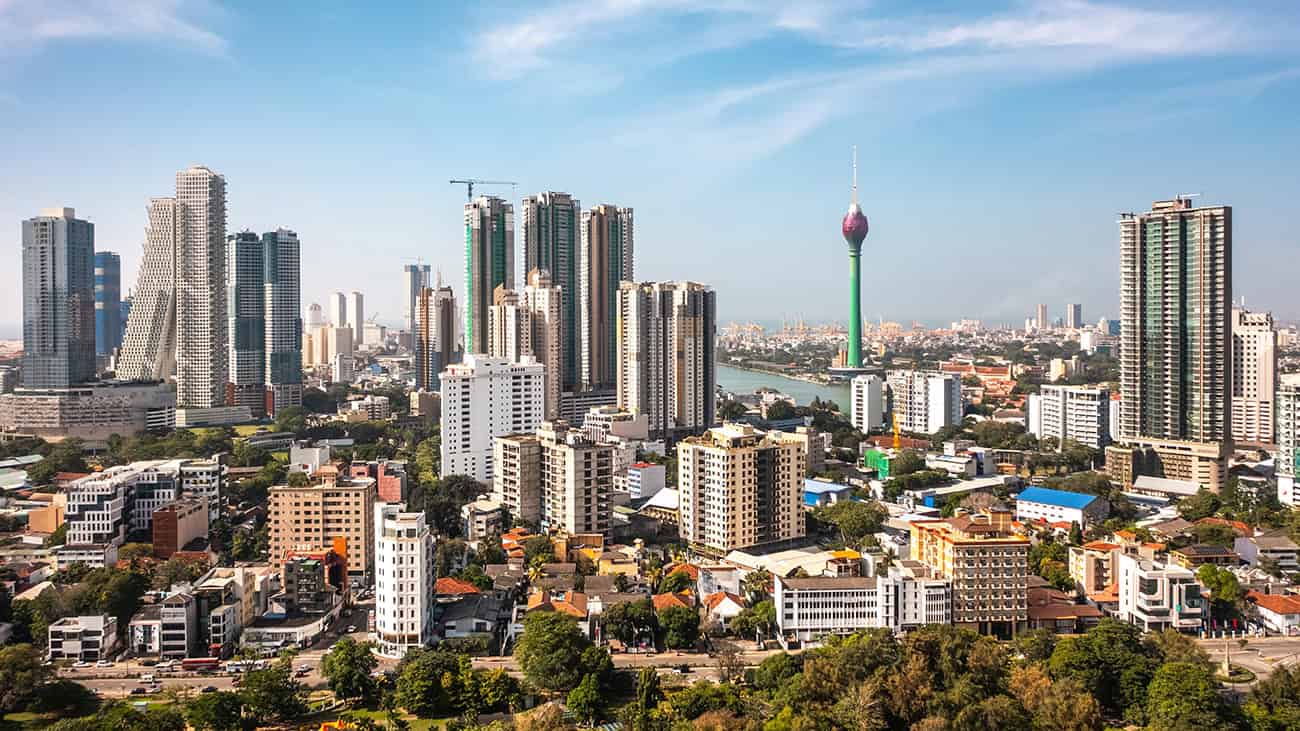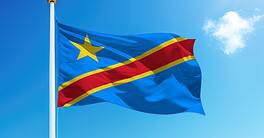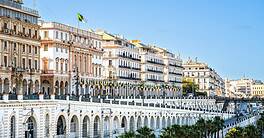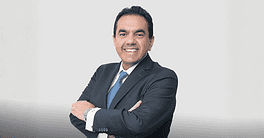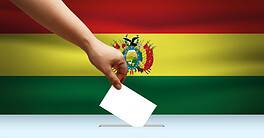To say that Sri Lanka has seen its ups and downs lately is a bit of a perennial. The island nation was forced to seek assistance from the International Monetary Fund (IMF) 16 times between 1965 and 2020 in a history punctuated by civil war, constitutional crisis, terror attacks and Covid-19.
Each time, it has bounced back.
The latest such episode started in 2019 with the ongoing debt crisis, followed by a currency collapse and, in 2022, the fall of the scandal-ridden government of Rajapaksa. Since then, Rajapaksa’s successor, President Ranil Wickremesinghe has presided over yet another tentative economic recovery.
The government’s economic reform plans, including fiscal belt-tightening, foreign-debt restructuring and measures to attract foreign investment, received a vote of confidence in September 2022 when IMF staff and the Sri Lankan authorities reached a staff-level agreement to support Sri Lanka’s economic policies with a 48-month arrangement under an Extended Fund Facility of about $2.9 billion. By the third quarter of 2023, after six successive quarters of negative growth, the economy saw a positive turn. The country reported a current account surplus, disinflation, increased revenue and growing remittances from citizens working abroad.
| Vital Statistics |
|---|
| Location: South Asia |
| Neighbors: Sri Lanka borders India and Maldives by sea. |
| Capital City: Colombo is the executive and judicial capital; Sri Jayewardenepura Kotte is the legislative capital. |
| Population: (2024 est.): 21.9 million |
| Official language: Sinhalese, Tamil |
| GDP per capita (2022): $3,354 |
| GDP size (2022): $74.85 billion |
| GDP growth (2023): 4.5% |
| Inflation: (April 2024): 1.5% YoY |
| Unemployment rate (2023): 4.7% |
| Currency: Sri Lankan rupee |
| Investment promotion agency: The Board of Investment of Sri Lanka (BOI) |
| Investment incentives: All incentives are subject to approvals and registrations. The BOI approves private FDI and local investments. BOI-registered companies enjoy enhanced capital allowance, reduced or zero corporate income tax rates, 100% foreign equity and earnings repatriation and other advantages. |
| Corruption Perceptions Index (2023): 115/180 |
| Credit rating: CCC- (Fitch Ratings) |
| Political risk: Mass protests against former President Gotabaya Rajapaksa led him to step down and flee the country in 2022. With the next presidential and parliamentary elections planned for 2024, the approval ratings of the incumbent president and his government are weak. As the political opposition has expressed dissatisfaction with the IMF bailout deal, a change in the government could be a risk to the program and loan agreement in their current form. |
| Security risk: Risk of terrorist attacks, intercommunal and religious tensions, violent crime, petty crime and credit card fraud. |
| Pros |
|---|
| Young population (15-29 years) 23.2% |
| Has 26 bilateral investment promotion and protection treaties providing protection for foreign investment within the country. |
| Preferential regional market access under South Asian Free Trade Area, Asia-Pacific Trade Agreement and free trade agreements with India, Singapore and Pakistan. Sri Lankan products can enter duty-free under US GSP and EU GSP+ programs. |
| Bonhomie with creditor countries, including India, France, Japan, China and the US. |
| Abundance of industrial minerals including ilmenite, rutile and zircon. |
| Green hydrogen and offshore wind power have great potential. |
| Cons |
|---|
| Among the countries most vulnerable to climate change. Based on impact of extreme weather events 2000–2019, Global Climate Risk Index ranks Sri Lanka 23rd most affected economy out of 180. |
| Entrenched corruption and bureaucratic red tape. |
| Fragile fiscal balances, ongoing external debt restructuring and high debt servicing costs. |
| Excessive reliance on tourism and textiles. |
Sri Lanka has always held great potential for economic development, say experts; and this latest recovery again offers attractive prospects for outside investors.
“The potential for the economy is huge, especially around sectors such as tourism, global supply chains and service sector exports,” says Michael Iveson, a research fellow in global economics at Lakshman Kadirgamar Institute, Sri Lanka. The nation “can be a gold mine for potential projects, with a skilled labor force, a hard-working population and huge natural endowments.”
Indicators Pointing Upward
Export earnings from tea, rubber and coconut-based products are positive as of February. Quartz deposits in many parts of the country and duty-free access to markets including the European Union and India have made the solar component manufacturing sector attractive. The island’s manufacturing sectors—particularly apparel, textiles and electronics—offer opportunities for foreign capital, notes Hesham Zreik, founder and CEO of FasterCapital, a Dubai-based angel investor.
Sri Lanka welcomed over 100,000 tourists in the first 20 days of April alone. “Tourism has seen a very strong recovery after four years of turbulence,” says Iveson. “By working with local businesses and communities and making the most of a rich heritage, culture and hospitality, tourism will continue to thrive and play an important part in Sri Lanka’s economic recovery.”
Despite the hiccups, many foreign companies have prospered on the island. The Port of Colombo is the highest-performing port in South Asia, hosting some of the bigger names in logistics, including Dart Global Logistics and EFL Global shipping. Other foreign companies operating in Sri Lanka include IFS, a global enterprise software solution company; HCL Technologies, a global IT company; Apollo Marine International, a food processor; pharmaceutical giant SmithKline Beecham; and Best Pacific International Holdings, an apparel manufacturer. International events like Startup Weekend by Techstars, Seedstars and AngelHack, have touched down in Sri Lanka, encouraging a bloom of startups.
There are signs, too, that the economic recovery is strengthening.
The World Bank projects a GDP of 2.2% in 2024 and 2.5% in 2025. The Sri Lankan rupee appreciated against other currencies including the US dollar, euro, pound sterling, Indian rupee and Australian dollar during the first four months of this year. The Central Bank of Sri Lanka reported the state as having $5.5 billion in gross official reserves at the end of April 2024, recording a more than $1 billion increase from the end of 2023. And the central bank notes that the rupee’s real effective exchange rate of 24 index points remains well below the threshold of 100, indicating that it is maintaining external competitiveness.
“Various indicators employed by foreign exchange traders suggest a likelihood of further appreciation in the currency,” says Vidhura Tennekoon, assistant professor of economics at Indiana University. “Notably, the central bank has actively intervened in the market in recent months to curb excessive appreciation, while also striving to bolster its foreign reserve stock.” In September, Fitch Ratings upgraded Sri Lanka’s long-term local-currency issuer default rating to CCC- from Restricted Default.
“The risk of further defaults persists, but the right macromeasures being actively pursued could avert the worst,” says Alnoor Bhimani, professor of management accounting and director of the South Asia Centre at the London School of Economics and Political Science.
Boosting FDI
The nation’s recent history of economic instability has nevertheless created negative perceptions of Sri Lanka and its attractiveness to foreign direct investment (FDI). Net FDI inflows in 2022, as a percentage of GDP, were only 1.2%, far lower than regional peers Malaysia (3.6%) and Vietnam (4.4%). FDI, including foreign loans, fell drastically last year, to $758 million from $1.2 billion in 2022. Just as concerning is the mix of investment targets. FDI has focused on traditional sectors in recent years, and the composition of Sri Lanka’s export basket has remained unchanged for around 25 years. Diversifying into new sectors is necessary to make the country more resilient to external shocks, experts argue.
Thus far, the Wickremesinghe government appears to agree. Its development plan couples sustainable macroeconomic policy implementation with a focus on developing digital- and green-economy sectors and encouraging competition through liberalization and divestment of state enterprises.
“The government’s focus on infrastructure development, digital transformation and export diversification could drive economic growth in the long term,” Zreik argues. Wickremesinghe has also highlighted the potential of renewable energy, including an ambitious plan to achieve net-zero emissions by 2050. An investment of $11.5 billion is needed to shift 70% of electricity consumption to renewable by 2030, and measures included in the Electricity Act of 2022 cleared legal hurdles for large-scale private investments.
But making up for Sri Lanka’s lost years and making the island a lasting FDI magnet will require a careful balancing act between liberalization and addressing basic human needs.
“Transparent, straightforward policies are still needed to make foreign investment a smoother proposition,” Iveson says. And while the economy is “stabilizing at the top level, inequality is drastically increasing,” he warns. “The middle class is being stretched through higher energy prices, rising food prices and weaker public infrastructure. The austerity measures required to finance structural reforms are creating significant challenges for ordinary people.”
Iveson adds, “There are also elections in the coming year, which may bring more instability into the mix; this is the last thing the economy needs after the turbulence of the last few years.”
